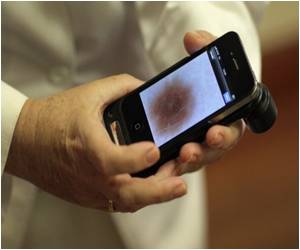A type of melanoma that affects dark skinned Asians and Hispanics and attacks the palms and soles is more likely to recur than other types of melanoma, a study has found

According to the NYU Langone researchers, acral melanoma is the form of cancer that in 1981 killed Jamaican reggae musician Bob Marley, whose malignancy developed under his toenail. Unusual for melanoma, it does not favor the fair-skinned and most commonly occurs on the palms of the hands and soles of the feet and under nails.
For the study, believed to be the first analysis of acral melanoma recurrence patterns, researchers checked tissue samples from 244 melanoma patients at NYU Langone whose disease was tracked from 2002 to 2012. Sixty-four patients had acral melanoma, and each was compared to three others who had a different form of melanoma but were of similar age, gender, ethnic origin, and severity stage of skin cancer. All patients had volunteered to share their health information as part of a cancer tissue database known as the Interdisciplinary Melanoma Cooperative Group, and all had their melanomas treated according to standard surgical guidelines of the National Comprehensive Cancer Network.
Results of the analysis showed that acral melanoma was more likely to come back in the same spot or another nearby part of the body than other melanoma tumors, at 49 percent and 30 percent, respectively. Survival rates for acral melanoma patients over the course of the study decade were also half those of patients with non-acral melanomas.
"Physicians and their patients need to recognize acral melanomas as a potentially dangerous, aggressive, and recurring form of skin cancer, especially in minorities with dark skin," says study senior investigator Jennifer Stein, MD, PhD, an assistant professor at NYU Langone. "Our study results document that people with acral melanomas are more likely to have recurrences in the skin surrounding their original malignancy."
She adds: "People concerned about persistent, growing lesions on their hands or feet need to consult their physician and be on guard for this type of skin cancer, which is estimated to account for 1 percent to 2 percent of all melanomas."
Advertisement
Study lead investigator and NYU Langone research fellow Priyanka Gumaste, BA, says the findings also offer evidence that current surgical guidelines about the size of surgical margins — or safety buffers of additionally removed skin immediately surrounding the tumor — need to be re-examined. "The high recurrence rate among small acral melanoma tumors warrants further investigation," says Gumaste, who is also a medical student at Rutgers University in New Jersey. "Our results raise the question of whether surgical guidelines for removing melanomas need to be different for acral melanomas, or even type-specific to small and large melanoma tumors," she adds.
Advertisement
Dr. Stein says genetic mutations are likely behind the high acral recurrence rates, with cancer-triggering mutations activating tumor growth in a much larger area than previously thought.
Ms. Gumaste says any revisions to guidelines will likely require a multicenter randomized trial in which some patients have larger amounts of tissue around tumors removed to see if this makes a difference in recurrence patterns.
Source-Eurekalert










